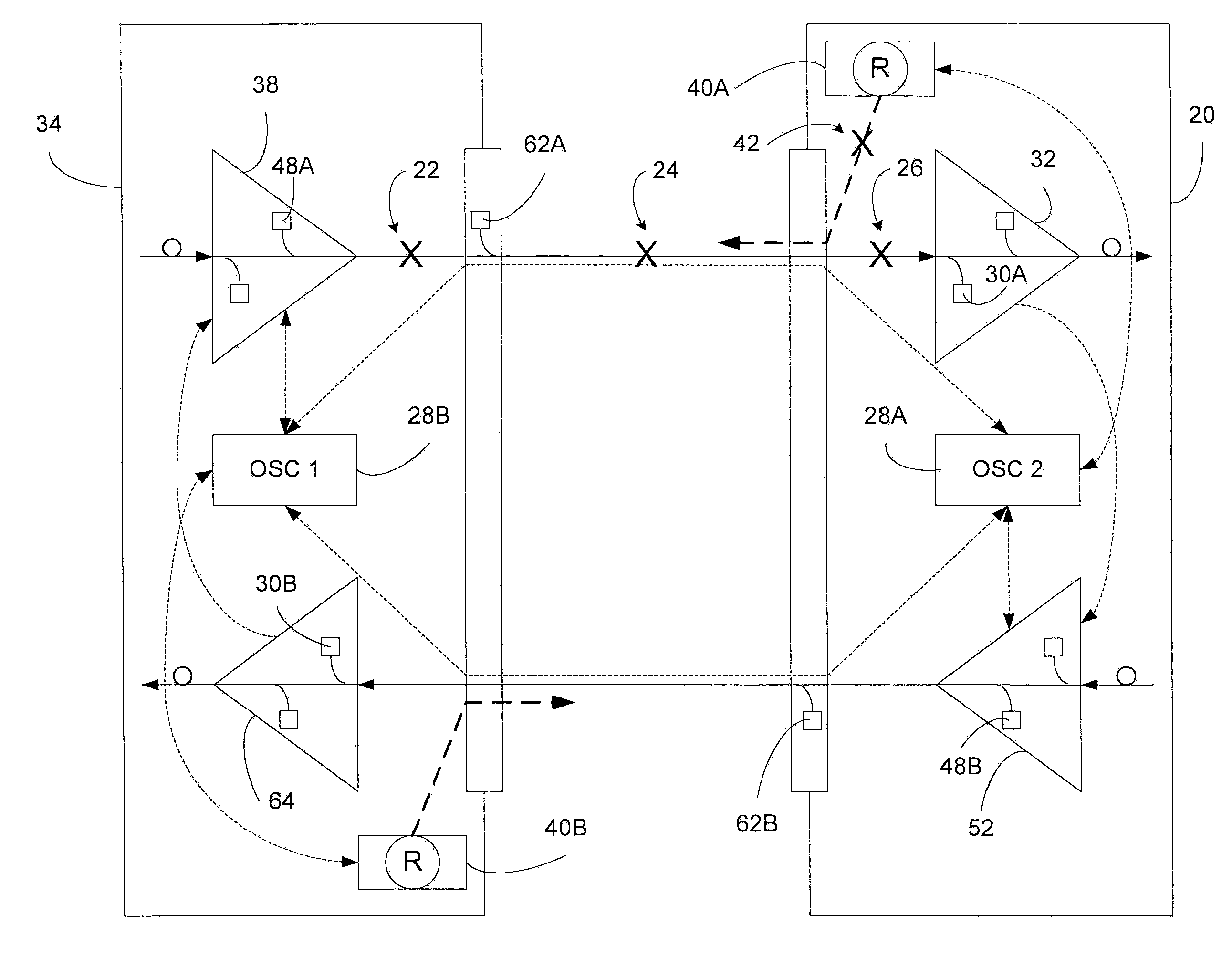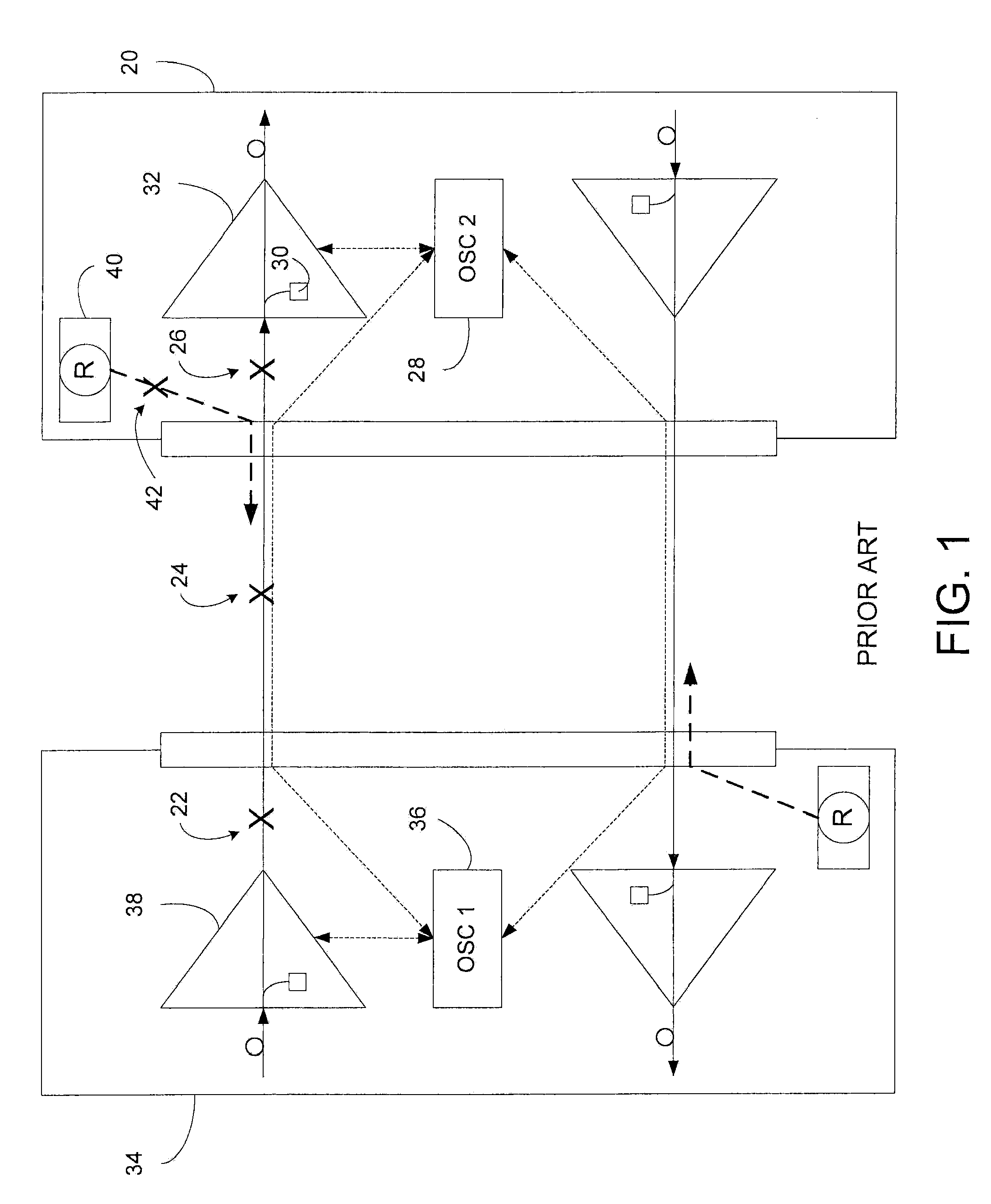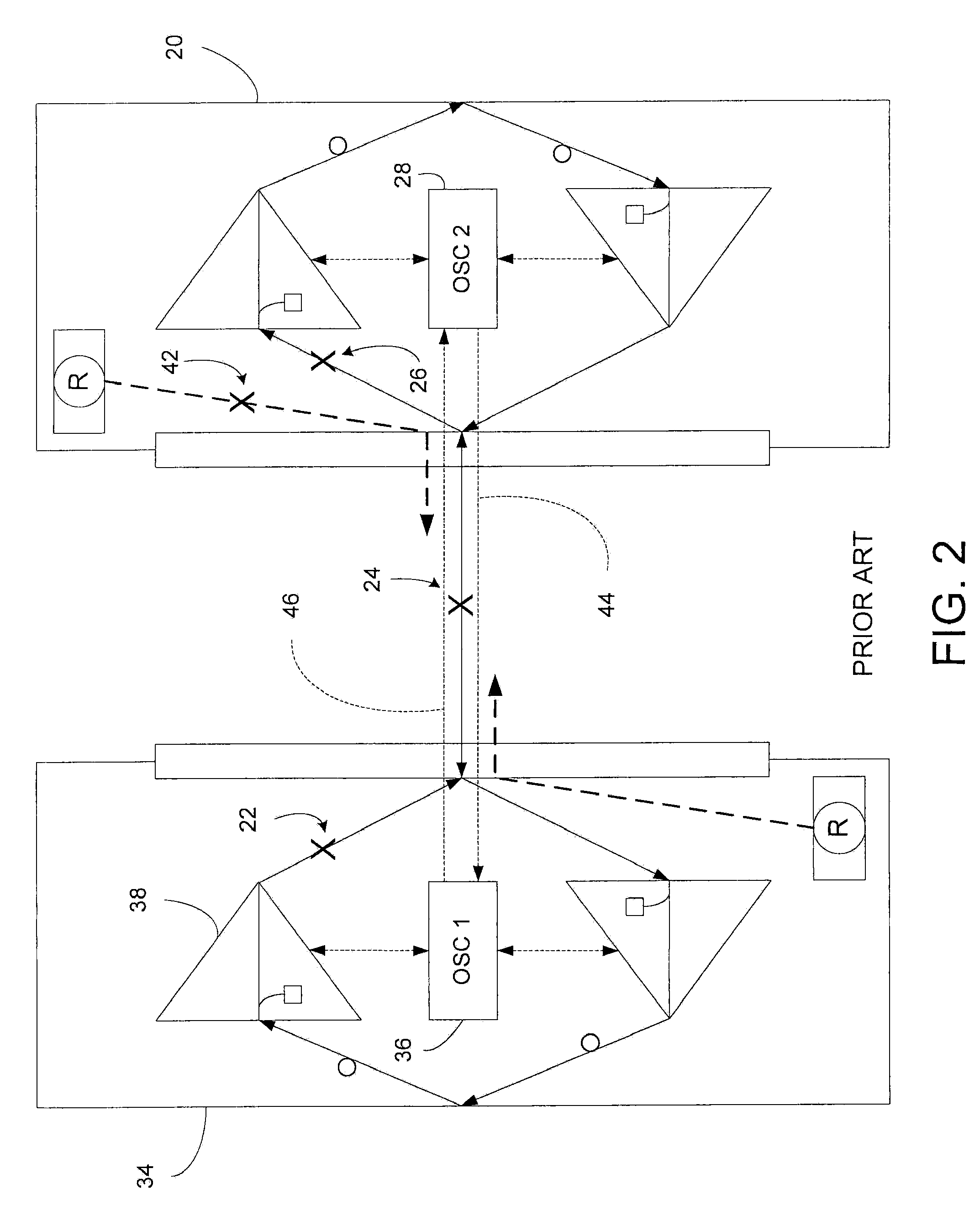Automatic optical power management in optical communications system
a technology of optical communication system and automatic power management, applied in the field of optical communication system, can solve the problems of reducing the power of optical communication system automatically, affecting the safety of individuals without eye protection, and affecting the safety of individuals, so as to achieve quick and reliable power reduction and improve safety
- Summary
- Abstract
- Description
- Claims
- Application Information
AI Technical Summary
Benefits of technology
Problems solved by technology
Method used
Image
Examples
Embodiment Construction
[0028]According to the preferred embodiments of the present invention, each emitting light source, be it a laser, a Raman pump, or an EDFA, has a dedicated detection mechanism at the transmitting and / or receiving end (as appropriate for the communications system in question) that can unambiguously detect presence / absence of that emission source, irrespective of the power levels of other emission sources that may exist on the common fiber. The shutdown sequence is then handled such that APR is first performed on the Raman sources, (potentially non service-affecting), prior to making a determination on service-affecting emission sources (EDFAs). The preferred embodiments of the present invention are also implemented in view of the need to minimize the amount of software required to enact APR. The APR mechanism of the present invention is preferably implemented in hardware and field programmable gate arrays (FPGAs). APR solutions that rely heavily on software implementations, although ...
PUM
 Login to View More
Login to View More Abstract
Description
Claims
Application Information
 Login to View More
Login to View More - R&D
- Intellectual Property
- Life Sciences
- Materials
- Tech Scout
- Unparalleled Data Quality
- Higher Quality Content
- 60% Fewer Hallucinations
Browse by: Latest US Patents, China's latest patents, Technical Efficacy Thesaurus, Application Domain, Technology Topic, Popular Technical Reports.
© 2025 PatSnap. All rights reserved.Legal|Privacy policy|Modern Slavery Act Transparency Statement|Sitemap|About US| Contact US: help@patsnap.com



